MDRS Crew 188 Journalist Report 07FEB2018
MarsHigh Pyramid: Reinterpreting Maslow’s Hierarchy of Needs for Mars
SOL-10 Author’s name: Dr. Sarah Jane Pell
A highlight of SOL 9, Crew 188 watched the delayed transmission of Elon Musk and his teams at SpaceX successfully test flight of the Falcon Heavy rocket into space carrying his Tesla and Mars-tronaut. With the ability to lift ~64 metric tons (141,000 lb) into orbit, and the roar of the crowds with each phased progression, we shared in the ecstatic release knowing that humanity is on its way to Mars.
An hour before, EVA-10: Dr. Sarah Jane Pell, Julia De Marines and Zac Trolley launched the Crew 188 Falcon Light test vehicles propelled by Alkaselza (for the active ingredient: baking soda) and water from the MDRS station, into the analogue CO2 of the Martian landscape. [See Crew 188 Sol 9.
EVA-10 Report].
Upon our return to the Main Habitat, we discussed how humanity might proceed beyond this auspicious point. In examining the basic human needs here at the Mars Desert Research Station, we continue efforts to report our experience to add to the body of knowledge informing future strategies and mission architectures to Mars [see Sol
5. Journalist
Report].
After supper, we watched the film Apollo 13. There was a classic scene where the flight Director says, “I don’t care what the system was designed to do, I care about what it can do… Work the problem people.” Today we asked, how well does the behaviour of the MDRS Simulation participants reflect or support our needs here on Mars? Logic suggests that if we can identify or communicate needs, this motivates us to address our deficiencies, and work on our growth and discovery needs. We reflect on Maslow’s pyramid of needs in an effort to work the problem.
We referred to “A Theory of Human Motivation” the psychology theory proposed by Abraham Maslow and published in Psychological Review 1943. It outlines a hierarchy of human needs (for present life on Earth) as our baseline. Maslow’s five-stage model (1943, 1954) was expanded to include cognitive and aesthetic needs (Maslow, 1970a) and later transcendence needs (Maslow, 1970b). Maslow noted that the order of needs might be flexible based on external circumstances or individual differences. For example, the need for creative fulfillment may supersede even the most basic needs, because it surpasses those needs. Maslow (1987) also pointed out that most behavior is multi-motivated and noted that “any behavior tends to be determined by several or all of the basic needs simultaneously rather than by only one of them” (p. 71).
We see this report an opportunity to adapt Maslow’s pyramid for future human needs on Mars. Instead of focusing on psychopathology and what goes wrong with people, Maslow (1943) formulated a more positive account of human behavior, which focused on what goes right. He was interested in human potential, and how we fulfill that potential. We therefore begin with the highest, and ultimate growth needs, and work downwards to the base needs, reflecting on our status at MDRS and response to this.
8. Transcendence Transcendence needs – A person is motivated by values, which transcend beyond the personal self (e.g., mystical experiences and certain experiences with nature, aesthetic experiences, sexual experiences, service to others, the pursuit of science, religious faith, etc.).
All of Crew 188 agreed that the MDRS scenery all around has inspired daily moments of transcendence. The hike up to Phobos Peak was a highlight for Julia De Marines [Astronomer]: she explains that it was a culmination of the environmental beauty and the feeling of overcoming so many challenges, that led to a peak state of being [See. EVA-05 Report].
Zac Trolley [Engineer] has not noted any moments of transcendence: but he adds the caveat that there is still a possibility of realising a critical position at MDRS in relation to his broader mission towards life on Mars.
7. Self Actualization Self-actualization needs – realizing personal potential, self-fulfilment, seeking personal growth and peak experiences.
As Trolley posted to social media: “The task ahead of us now is to build the infrastructure here on Earth as a dry run for future settlement of the Red Planet…” This is no mean feat. We are here because we hope to contribute to the discussions of the Mars Society and related analogue communities around the globe undertaking this challenge. Trolley explains, in seeking opportunities for self-actualisation there is always a trade-off between what we know and what we don’t know. We often gravitate to the more familiar and comfortable. Engineering systems however require a lot of money and time to install and maintain. They usually require an entire organization to be aligned in the same direction to be effective. So like as a new coming to the MDRS program, it has been a challenge to learn the existing systems, and navigate the organization, to exert the most force to create the most change. He hasn’t figured out how these needs for self-actualization might be met under simulation conditions. The simulation is a stepping-stone into understanding pathways for self-actualization. It is the journey not the destination…
6. Creative Aesthetic needs – appreciation and search for beauty, balance, form, etc.
De Marines [Astronomer] searches for beauty by discovering and exploring rocks on the MDRS plains. The range of exquisite specimens – from the moment we stepped out on our first EVA – has captivated our imaginations and curiosities for what we see, what we can learn, and what we can imagine: from the elemental origins, to the creative sculpting or application of the rocks as an aesthetic or utilitarian artefact.
Zac Trolley [Engineer] finds beauty and appreciation in design: in the same way the sculptor would describe working with a lump of clay, and taking away the excess to reveal what is within, he would take disparate systems and combine them to reveal the whole that they can become together. That requires an immense amount of planning and background information that Trolley is yet to acquire and therefore his ability to creatively design and refine the advanced life support systems to tested on Earth and used on Mars, is pending on MDRS. This challenge is strengthening his belief that organisation and strong leadership is required to connect the disparate systems between universities, analogue systems, hobbyists and enthusiasts around planet Earth.
5. Mental Cognitive needs – knowledge and understanding, curiosity, exploration, need for meaning and predictability.
Ryan Kobrick [Commander] is finding that the MDRS experience is serving his cognitive needs: by using new tools and gaining precision and experience with. Even scouting locations that he has been to ten years ago, he still feels that he is discovering something new, and he is reassured that much of it is still familiar.
For example, going into Lilith Canyon, he wasn’t sure if he knew where he was going, until he made the discovery of a particularly difficult pass, and was reassured that it was particularly memorably, and easily overcome.
4. Esteem Esteem needs – which Maslow classified into two categories: (i) esteem for oneself (dignity, achievement, mastery, independence) and (ii) the desire for reputation or respect from others (e.g., status, prestige).
The Crew has expressed difficulty and frustration at not regularly feeling a sense of dignity, achievement, mastery, and independence under the simulation conditions. Behind the scenes communications between the crew and mission control are regularly mediated, circumvented or edited, and our agency and autonomy has been far from our expectations. Connecting with the outside world during the communications window however serves this need. The crew is receiving messages and interactions from children, from well-respected space professionals, members of the Mars Society, Astronauts and other Analogue Astronauts engaged in Mars missions around the world this month. Direct engagement with our Alma Mata: the International Space University, and professional communities, also reinforce and address our needs for esteem: self-esteem and professional esteem.
3. Love/Belonging Love and belongingness needs – friendship, intimacy, trust and acceptance, receiving and giving affection and love. Affiliating, being part of a group (family, friends, work).
Tatsunari Tomiyama has been conducting Human Factors research [See. Sol 3 Journalist Report] helping us to appreciate and support our group dynamics and social interactions. By communicating our responses and feelings in relation to the demands of the simulation, and the requirements of analogue living, we are building a greater respect and understanding of each other. For the first week, we worked together well as a crew. This week, we bonded more closely. We set aside time to eat, train, relax, meditate and appreciate each other with group sharing exercises, hard-core work-outs, yoga, movies, morning briefings, de-briefings, and workshop salons to share experiences and skills. This week, we found ourselves working together as a family. This special group of individuals each shares a passion for space exploration, a desire to succeed, and demonstrate genuine care for other crewmembers. You could say, Crew 188 are feeling the love: talking about on-going collaborations, visiting each other’s countries and work places, and crew submissions to future space conferences, analogues and sponsors.
2. Security Safety needs – protection from elements, security, order, law, stability, etc.
The Main Habitat protects us from the cold desert night air, the hot midday sun, and the harsh winds and sand abrasion. In fact, we are conducting research with PIs at NASA Glenn Research Centre on the dust intrusion loads (particle size distribution and quantity) as we enter the airlocks after EVAs at MDRS. We have documented the status of MDRS safety equipment, risks, hazards, and anything and any time the stability of our Mars analogue experience has been impacted. For example, the fidelity of our simulation has been compromised every day: we have logged all unscheduled visits – including those in the middle of the night – and interruptions such as on-lookers driving by, stopping and taking photos, while we are on EVA or at the habitat. We have inspected and evaluated the effectiveness of the emergency evacuation equipment, and familiarized ourselves with the limitations and challenges, should we ever need to face an emergency situation during our time at MDRS. Despite our external concerns, the integrity of our internal crew leadership and the environment of respect that Ryan Kobrick fosters, has enabled us to remain as a strong committed and unified crew.
1. Biological and physiological needs – air, food, drink, shelter, warmth, sex, sleep, etc.
For 5 days, Crew 188 lived with a propane leak in the main hab [See Journalist Report Sol 5.
Abbreviated
version.] and another small leak was detected on Sol 10. Crew 188 also didn’t receive a full ration of food or water, and stocks are low. The food supplied supports an unbalanced diet comprising items: – low in nutritional value – high in starch – high in salt – and high in sugar. The Greenhab produce serves research not supplementary food supply. The food missing from the basic provisions, promised resupply, and sponsor foods will not be delivered. The vegetable rations included [tinned dried
corn, peas, broccoli] to support 6 people for 7 days. We supplemented those provisions with fresh vegetables [carrot, celery, kale], to extend to 9 days and served as a side dish (not main meal ingredient). We have 4 days in simulation remaining, no resupply, and the crew is rundown.
Future crews should not expect that MDRS supply the provisions as listed in the Operations Manual. The list has not been updated, the items are not guaranteed, and the MDRS rations will not be sufficient to support your needs. Crew 187 attempted to eat only what was provided. They lost a significant amount of weight and physical and mental condition. With two MDRS alumni crew members, we anticipated the deficit and coordinate a group excursion to shop for supplies before our arrival, but we underestimated the scarcity of nutritional food sources, and now suffer the consequences. We have requested 2 more tins of vegetables to support 6 people for 4 days. Our initial request was denied. We will submit another request, and harvest as much from the GreenHab as we can to sustain crew health.
We were also permitted to collect and transport 450 Gallons of water from Huntsville for use at the MDRS for 14 days. At Sol 9, we had used 370 Gallons of water. The average use is 37 Gallons per day including all drinking water, the water used for the Greenhab, for dishwashing and personal hygiene. We note that on the first night, there were 13 people staying at MDRS (including 3 of us sleeping on the GreenHab floor), and Crew 187 all had showers on the final morning of their departure. Response: water is liquid gold. We have been incredibly frugal, and smelly, for the sake of ensuring that we have enough water to drink and cook. Another 90 Gallons was delivered today. We anticipate that we will manage at this rate until the end of the Simulation with one day to spare provided there are no anomalies. The maintenance of power, airflow and thermal control is difficult to manage by design and condition [See. Sol 1-9 Operations
Reports]. We haven’t discussed sex yet as a Crew, although we have noted the provision of a Pregnancy Kit in the First Aid Kit. The crew sleep and wellbeing are affected by the entire list above.
We are heartened that Maslow outlined the characteristic of self-actualizers and the typical behaviours that lead to these traits. As we sign off, we review this list, and pose it as our recommendation or aspiration, for giving and receiving the best of ourselves for future Mars missions.
Characteristics of self-actualizers:
1. They perceive reality efficiently and can tolerate uncertainty;
2. Accept themselves and others for what they are;
3. Spontaneous in thought and action;
4. Problem-centered (not self-centered);
5. Unusual sense of humor;
6. Able to look at life objectively;
7. Highly creative;
8. Resistant to enculturation, but not purposely unconventional;
9. Concerned for the welfare of humanity;
10. Capable of deep appreciation of basic life-experience;
11. Establish deep satisfying interpersonal relationships with a few people;
12. Peak experiences;
13. Need for privacy;
14. Democratic attitudes;
15. Strong moral/ethical standards.
Behavior leading to self-actualization:
(a) Experiencing life like a child, with full absorption and concentration;
(b) Trying new things instead of sticking to safe paths;
(c) Listening to your own feelings in evaluating experiences instead of the voice of tradition, authority or the majority;
(d) Avoiding pretense (‘game playing’) and being honest;
(e) Being prepared to be unpopular if your views do not coincide with those of the majority;
(f) Taking responsibility and working hard;
(g) Trying to identify your defenses and having the courage to give them up.


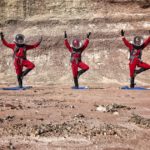
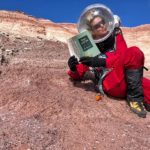
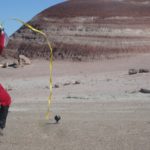
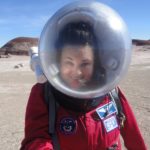
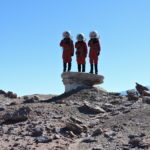
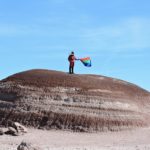
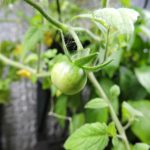
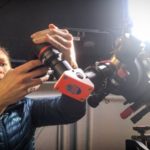
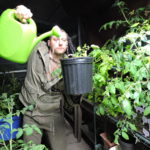

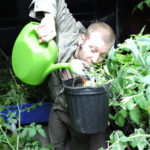
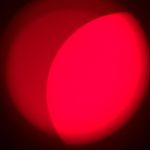

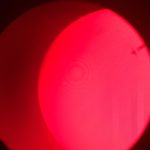
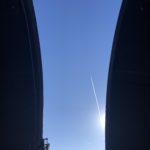
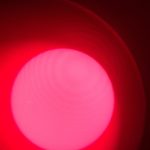
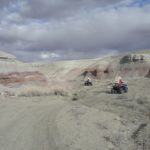
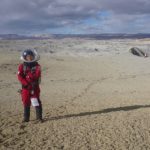
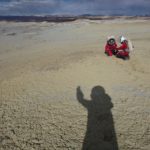
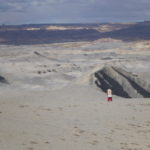
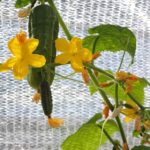
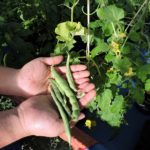
You must be logged in to post a comment.